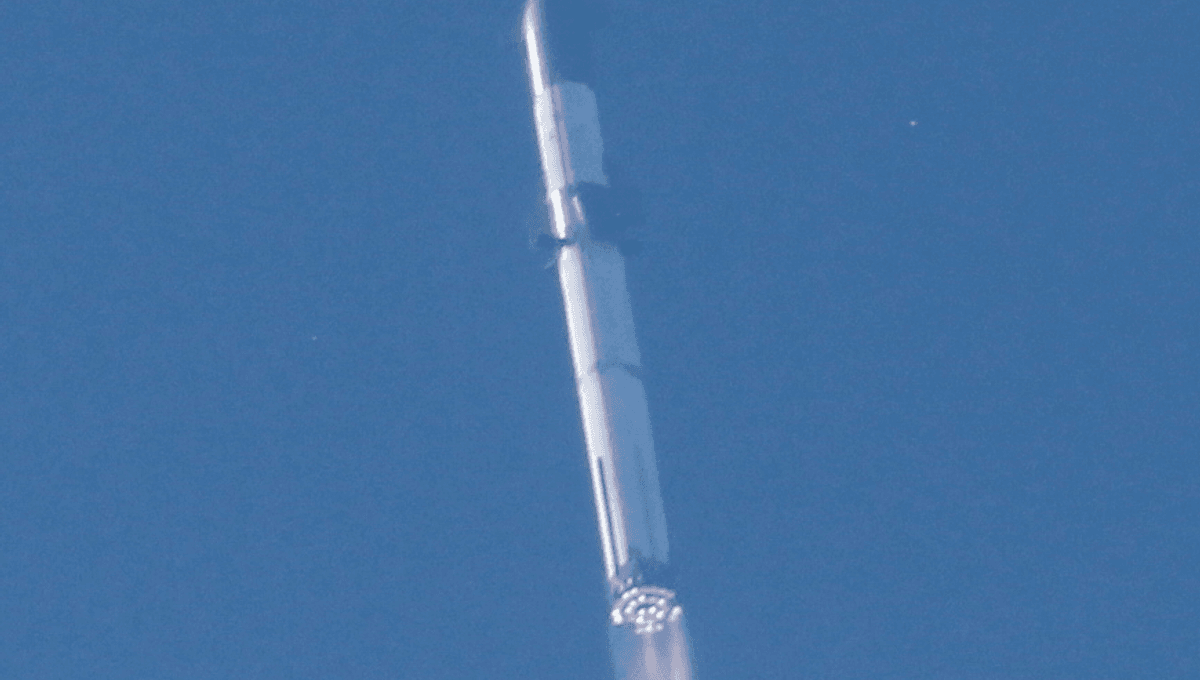-
Новости
- ИССЛЕДОВАТЬ
-
Страницы
-
Статьи пользователей
-
Форумы
Finally, A Successful Starship Launch – What This Means For The Moon Landings

Finally, A Successful Starship Launch – What This Means For The Moon Landings
Starship’s 10th test flight has deployed simulated satellites for the first time, and splashed down on target in the Indian Ocean, achieving SpaceX’s primary objectives after months of failed attempts, many ending in fiery explosions. Plans for Starship’s involvement in the future Moon landings remain badly behind schedule, and not everything went according to plan. Nevertheless, the largely successful flight will quieten talk of redesigning the Artemis Mission to avoid dependence on Starship, at least for a while.
The rest of this article is behind a paywall. Please sign in or subscribe to access the full content. Elon Musk has promoted Starship as the vehicle that will take humans to Mars, and many have endorsed the claim, despite the vast array of unaddressed issues for such a mission. Before that, however, it has two main goals: to deploy larger and more powerful Starlink satellites and to provide the second component of the Artemis III mission to return astronauts to the surface of the Moon. Originally planned for 2025, Artemis III will involve four astronauts riding NASA’s own SLS rocket – the largest rocket ever built until Starship came along – to lunar orbit. There, the Orion spacecraft will rendezvous with Starship, which will take two astronauts to the lunar surface and back to orbit and then to Earth. Officially, the schedule is now for this to occur in 2027, but almost no one believes both SLS and Starship will be ready by then, and even 2028 is looking doubtful. The success of flight 10 means the timeline does not need to be reset now. Nevertheless, SpaceX still needs to prove that Starship can carry a load as heavy as the Human Landing System to the lunar orbit, can land on the Moon and take off. That will require a payload at least six times heavier than the 18 tons (180,000 kilograms) carried on this flight. ⓘ IFLScience is not responsible for content shared from external sites. Finally, SpaceX needs to demonstrate to NASA that Starship can return to Earth with a reliability exceeding 99.8%, or 499 times out of 500, to avoid frying the astronauts during re-entry. The success opens the window for Starship to demonstrate these capacities, but on its own, does none of them. The process is much more involved than for the Apollo missions, not only because the Lunar South Pole makes a more challenging target, but because the goal is to be the forerunner for a sustained presence. After a series of successes in 2024, the first half of 2025 was a bad patch for Starship, with two explosions soon after launch, a series of failures prior to re-entry, and finally a major explosion during prelaunch testing. Combined with debris littering the area around the launch site and across the Caribbean, these failures have raised questions not answered by Musk’s widely ridiculed efforts to spin failure as success. This time, as planned, Starship made it into space and an hour later was filmed splashing down west of Australia. In between, it deployed eight dummy satellites with similar dimensions to those the company hopes will maintain its dominance of the satellite Internet market. It also relit one of its engines. "That was absolutely incredible," SpaceX’s Amanda Lee said during live launch commentary. "A huge congrats to all the teams here." As positive as this is for the goal of landing US astronauts on the Moon this decade – and, more importantly in many people’s eyes, before China – success was partly a matter of lowering the bar. Key to Starship’s lofty ambitions is reusability, which requires both the Starship itself and the Super Heavy boosters to be able to land themselves, potentially with the help of the launch tower’s “chopsticks”. Although the boosters have demonstrated this capacity before, splashdowns were scheduled for both this time, in the Indian Ocean and the Gulf of Mexico, respectively. That means the loss of plenty of expensive equipment – affordable on a test, but uneconomic if maintained long term. The fact that the booster lost an engine and part of the spacecraft’s skirt broke off also indicates further work is required, although on the scale anticipated in SpaceX’s iterative approach, rather than anything insurmountable. Vision from a buoy indicates the Starship exploded after splashdown, but the fact that the buoy was close enough to film it shows how close it reached to target. Moreover, it could as easily reflect its unsuitability for water landings, posing a problem for nearby fish, but not setting back missions to the Moon and Mars.


